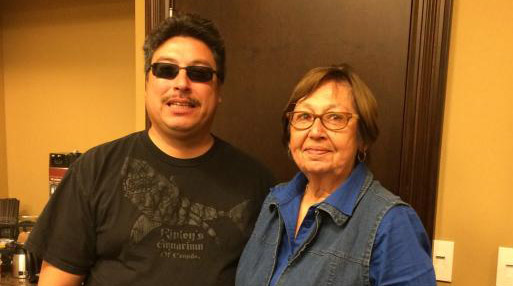Kinomaadswin Education Body board members selected


By Marci Becking
The five Regional Education Councils (REC) have selected the Board of Directors for the Kinomaadswin Education Body (KEB). The new term for the KEB board will last until 2017.
Claire Onabigon of Long Lake # 58 and Valerie Auger of Pays Plat First Nation were selected to represent REC #1. This REC consists of Long Lake #58, Biinjitiwaabik Zaaging Anishinaabek, Red Rock, Fort William, Pays Plat, Ojibways of Pic River and Pic Mobert First Nations.
In REC #2, Julia Pegahmagabow of Atikameksheng Anishinawbek and Debbie Mayer of Mississauga #8 were selected. Communities represented in this REC are Michipicoten, Ojibways of Garden River, Thessalon, Mississauga #8, Serpent River, Sagamok Anishnawbek and Atikameksheng Anishinawbek.
In REC #3, Robert Beaudin of M’Chigeeng First Nation and Charles Shawanda of Whitefish River First Nation were selected. REC#3 consists of Whitefish River, Sheshegwaning , Zhiibaahaasing, M’Chigeeng, Aundeck Omni Kaning, Sheguiandah and Wikwemikong Unceded Indian Reserve.
In REC #4, Lloyd Myke, Councillor for Magnetawan First Nation was elected for his second term and Nipissing First Nation Deputy Chief Muriel Sawyer was elected for a first term. REC#4 represents the communities of Nipissing, Wahnapitae, Dokis, Henvey Inlet, Magnetawan and Wasauksing First Nation – all of which have put forward Band Council Resolutions in support of the Anishinabek Nation Education Agreement.
Della Charles of Mississaugas of Scugog and Candy Thomas of Munsee Delaware Nation were selected in REC#5. This REC consists of Algonquins of Pikwakanagan, Curve Lake, Alderville, Chippewas of Rama, Mississaugas of Scugog, Chippewas of Georgina Island, Chippewas of Kettle & Stony Point, Chippewas of the Thames, Munsee-Delaware and Aamjiwnaang.
Questions were asked at the meetings regarding how the KEB works.
Q.- Is there administrative assistance to the KEB board?
A – Yes, the Restoration of Jurisdiction department of the Union of Ontario Indians provides the administrative support.
Q – What happens if a director/board member is selected and cannot commit to the full term?
A – There are provisions for replacing a director/board member. These have been in place since the first board selection.
Q.- Will there be qualifications for directors?
A – Each Regional Education Council will determine and set their own qualifications for directors.
Anishinabek Education Negotiator and legal counsel, Tracey O’Donnell explained to the new board members that their mandate includes participating in the negotiations with Ontario on the proposed Master Education Agreement and working towards the establishment of the Anishinabek Education System.
The negotiations on the Master Education Agreement will begin following the signing of the Master Education Framework Agreement by Ontario Education Minister Liz Sandals and Anishinabek First Nations on November 19, 2015 at Sault Ste. Marie.
“The Anishinabek First Nations and Ontario are focussed on student success and well-being,” says O’Donnell. “Ontario is willing to partner with us to work towards greater student achievement. That is what the proposed Master Education Agreement is about.”
In accordance with a Grand Council Resolution, the KEB was incorporated in January 2011 as a not-for-profit corporation owned and controlled by Anishinabek First Nations. In June 2012, the Grand Council mandated the KEB Board of Directors to oversee the establishment of the Anishinabek Education System.
The long-standing Anishinabek Education System vision statement remains reads: “We, the Anishinabek, are responsible to educate our children so that in the generations to follow there will always be Anishinaabe. Our education system will prepare our citizens for a quality of life based on the highest standards of Anishinaabe intellectual, holistic knowledge that supports the preservation and on-going development of Anishinaabe.”
The development of the Anishinabek Education System is based on the Anishinabek First Nations inherent jurisdiction over education: First Nation control of First Nation education.


